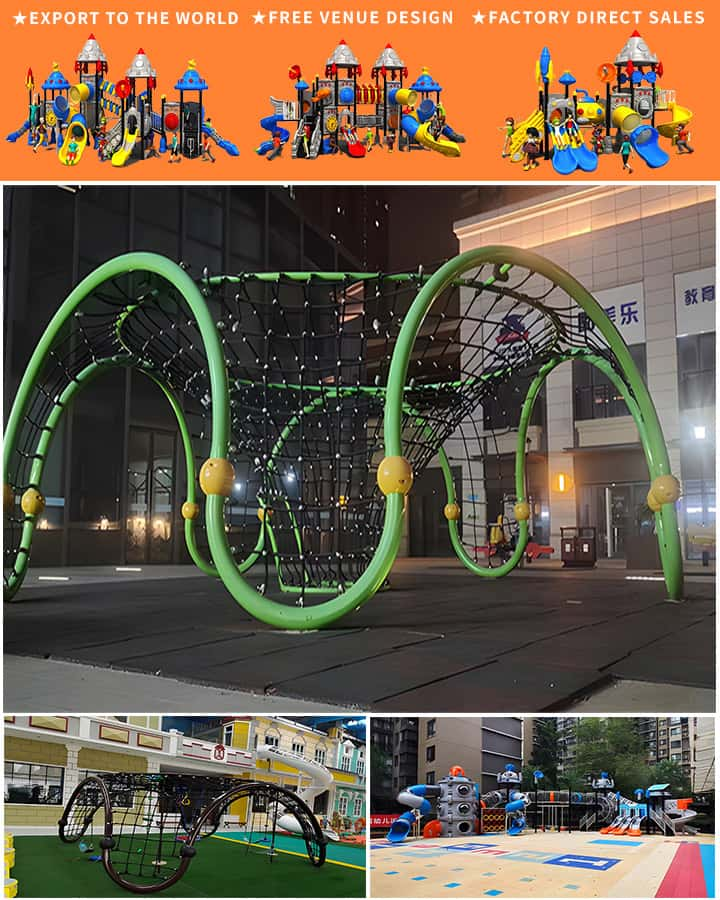Outdoor playgrounds are essential spaces for children’s physical development, social interaction, and overall well-being. One critical, yet often overlooked, aspect of playground design is the choice of floor material. The right outdoor playground floor material can significantly impact safety, durability, maintenance, and even the aesthetic appeal of the play area. This article explores various materials available for outdoor playground floors and their respective benefits.
1. Rubber Mulch
Rubber mulch is one of the most popular materials for playground surfaces due to its excellent shock-absorbing properties. It is made from recycled rubber tires, making it an environmentally friendly option. The cushioning provided by rubber mulch reduces the risk of injuries from falls, which is crucial for young children who are still developing their motor skills. Additionally, rubber mulch is relatively easy to install and low-maintenance, though it does require periodic raking to keep the surface smooth and safe.
2. Poured-in-Place Rubber
Poured-in-place (PIP) rubber is another rubber-based surface but offers a more seamless and durable solution compared to rubber mulch. PIP rubber is installed by mixing liquid rubber with a curing agent and pouring it directly onto a prepared base. This type of flooring provides consistent cushioning, is resistant to weather conditions, and has a longer lifespan. It’s also customizable in terms of color, allowing for creative playground designs that can be visually appealing.
3. Artificial Turf

Artificial turf has become a common choice for playgrounds aiming to mimic the look and feel of natural grass without the associated maintenance. Modern artificial turf products are designed to be soft and safe, with many featuring built-in padding for added shock absorption. They are highly durable and can withstand heavy use, making them ideal for high-traffic areas. However, artificial turf can be more expensive initially and may require infill materials to maintain its stability and safety.
4. Wood Chips
Wood chips are a traditional playground surface material known for their natural appearance and soft landing properties. They are typically made from hardwoods like cedar or redwood, which are naturally rot-resistant. While wood chips provide good shock absorption, they do require regular replenishment and maintenance to prevent compaction and maintain their effectiveness. Wood chips can also harbor insects and mold if not properly maintained.
5. Sand
Sand has been a staple in playgrounds for decades due to its fine texture and soft landing surface. It is especially common in beach-themed playgrounds or sandboxes. Fine sand is safer as it is less likely to cause abrasions, but it needs frequent raking to keep it level and free of debris. Sand can also get hot under direct sunlight, posing a burn hazard during hot weather.
Key Considerations in Choosing Playground Floor Material
When selecting outdoor playground floor materials, several factors should be considered:
- Safety: The primary concern is always safety. Look for materials with good shock absorption to reduce injury risks.
- Durability: Choose materials that can withstand heavy use and harsh weather conditions without frequent replacements.
- Maintenance: Consider how much upkeep each material requires and whether you have the resources to maintain it properly.
- Cost: Balance initial installation costs with long-term maintenance expenses to find a cost-effective solution.
- Aesthetics: The appearance of the playground can impact its appeal to children and caregivers alike. Choose materials that match the playground’s theme or design goals.
In conclusion, the right playground floor material can enhance the safety, durability, and enjoyment of outdoor play areas for children. By weighing the pros and cons of each option and considering key factors such as safety and maintenance, you can make an informed decision that best suits your playground’s needs. Whether you choose rubber mulch, poured-in-place rubber, artificial turf, wood chips, or sand, ensuring a safe and inviting environment will always be the top priority.




